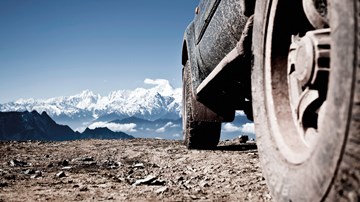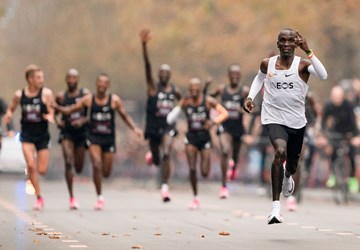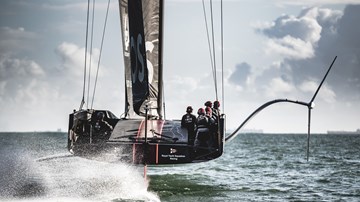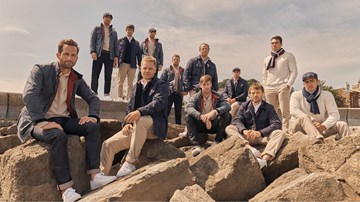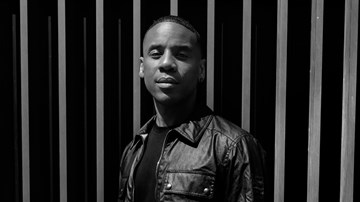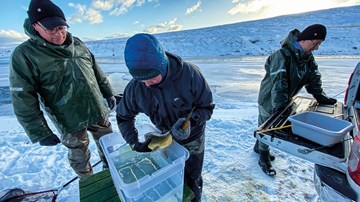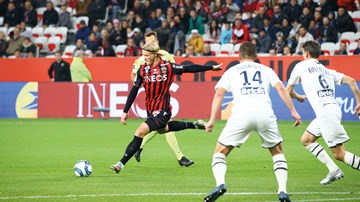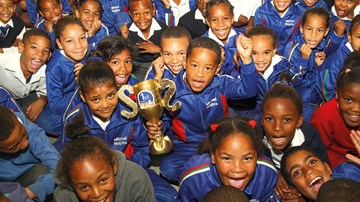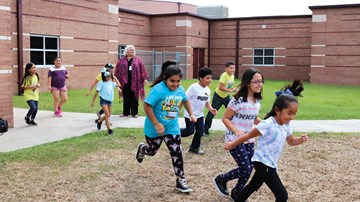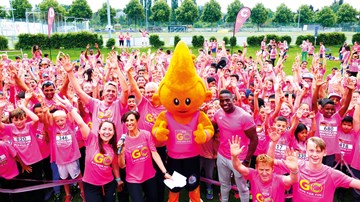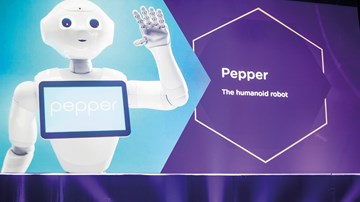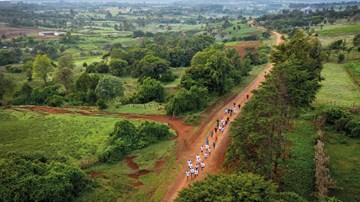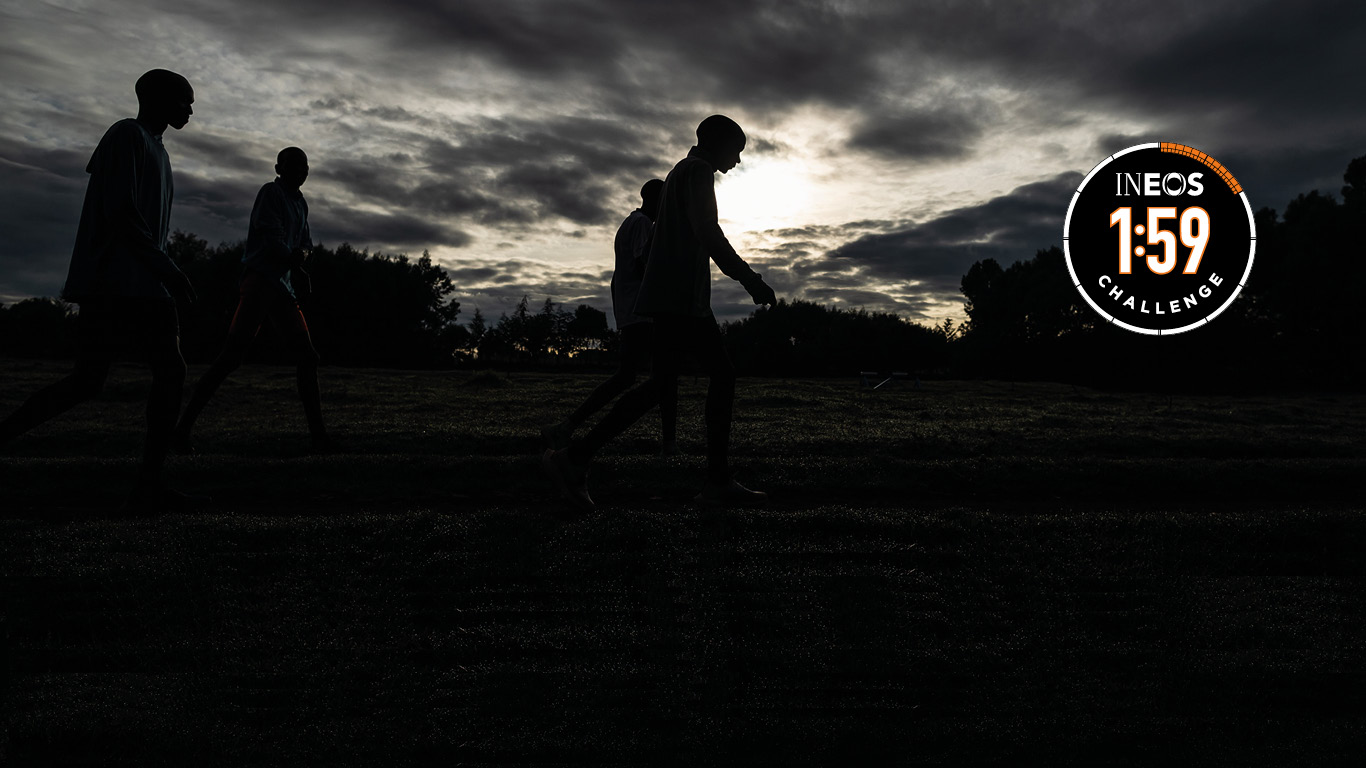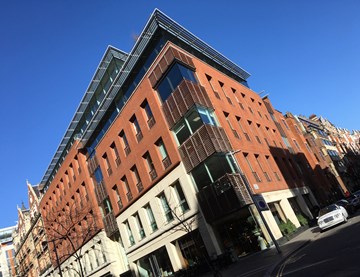Second to none
JUST 26 seconds had stood between Eliud Kipchoge and history. But in the end, the greatest marathon runner of all time didn’t need them. In a seemingly effortless performance, he ran 26.2 miles in 1:59:40 – beating his own personal best by 45 seconds – to become the first man on earth to comfortably run a marathon in under two hours.
As he crossed the finish line in Vienna, he declared: “We all made history today.”
The 34-year-old Kenyan was referring to the INEOS-backed supporting cast who had worked round-the-clock, and behind the scenes, to help make it happen.
The team of scientists, researchers, his coach, his manager, his nutritionist, his physiotherapist, the driver of the electric car who had controlled the speed of the race – and the 41, world-class pacemakers whose job had been to shield Eliud from any wind.
“Today is Eliud’s day but everyone can come out to celebrate this moment,” said two-time Olympian Lopez Lomo, who was one of the pacemakers.” We are all part of history. We all did this together as a running community.”
But there were others too.
The 120,000 spectators, who had lined the route to cheer him on, included INEOS’ Chairman and Founder Sir Jim Ratcliffe, a keen sportsman who has run more than 30 marathons himself.
“For that last half a kilometre, it didn’t look like Eliud’s feet were touching the ground,” said Jim. “He looked so calm and tranquil.”
Together that winning team had ensured that no stone was left unturned to help Eliud achieve his goal.
His performance on the day encapsulated Eliud the man – calm, consistent, patient and totally unflappable.
And there to see him race, for the first time, was his wife Grace and their three children.
She had telephoned him the night before his marathon attempt with a few words of advice.
“I told him he just needed to relax,” she said.
Man and machines in perfect harmony
The Car
An electric car controlled the pace of the race to ensure Eliud ran at the same speed for the entire 26.2 miles. But during testing, the team discovered that cruise control systems on cars are not 100% accurate. In short, they realised if the pace car ran 0.1kph too slow over two hours, Eliud would finish the race in 2:00:34.3. The RML Group, a high performance automotive engineering company in the UK, were hired to ensure that didn’t happen.
Lasers
The car was also fitted with lasers that shone a pattern on the road to help the pacemakers hold their formation – and a digital LED board so the runners could keep track of the time.
Transponder
The runners and the car carried a transponder chip, which was read by each of the one kilometre markers, providing accurate feedback on split times and speeds.
The crowd
Eliud Kipchoge wanted a big crowd because the bigger the crowds, the better he performs. About 120,000 spectators lined the entire, tree-lined route to cheer on Eliud.
Man on bike
Valentijn Trouw, Eliud’s manager, handed Eliud Kipchoge a bottle of 215 millilitres of energy drink Maurten every 5km.
The second car
To ensure nothing was left to chance, a second car – equipped with the same software as the first – was on standby should the team encounter a problem.
Pacemakers
Eliud’s pacemakers were primarily there to shield him – as much as possible – from the wind. They ran in a never-seen-before formation, which created a little pocket of air around him. Every few kilometres, a new team of pacemakers took over because no other athlete in the world can run at the same pace as Eliud without resting.
Vienna
Vienna was chosen to host INEOS’ 1:59 Challenge because it was within a three-hour time difference of Eliud’s training camp in Kenya, it had a long, flat, sheltered, straight course, where spectators could watch the race, and the weather was likely to be good.
The world was watching
INEOS 1:59 - The challenge in numbers
120,000 spectators lined the route on the streets of Vienna
500+ million people watched the challenge through global broadcasters & online via YouTube
12,500 online press articles
2.9 BILLION cumulative readership
17 BILLION impressions across all social channels
No Human Is Limited - The campaign in numbers
850,000 global followers - #NoHumanIsLimited became the third top trending topic on twitter on the day of the INEOS 1:59 Challenge (behind two other INEOS 1:59 related hashtags)
13 BILLION - The campaign reached 13 billion on twitter alone with 215,000 #NoHumanIsLimited posts on twitter and 30,000 posts on Instagram
8 of the Best - 8 ambassadors each with their own story of breaking through barriers to achieve the remarkable:
- Chris Froome
- Patrick Vieira
- Sir Ben Ainslie
- Hermann Maier
- Abdi Nageeye
- Elaine Wyllie
- Robby Ketchell
- Dame Tanni Grey-Thompson
#No Human Is Limited
ELIUD Kipchoge didn’t just want to make history on the streets of Vienna. In running a marathon in under two hours, he wanted to show the world something else. That no human is limited. As he crossed the finish line in 1:59:40, he said: “I expect more people all over the world to run under two hours after today.”
For years experts had insisted that the human body was simply not capable of running 26.2 miles in under two hours. But they had said that before. About the four-minute mile. In the 1940s, that was not only considered impossible, but also dangerous. But on May 4, 1954, Roger Bannister believed he could do it – just as Eliud believed he could become the first man of earth to run a sub, two-hour marathon on October 12, 2019.
Sixty-five years separated these two historic events but both men prepared to meet their destiny by visualising victory. Sadly Roger Bannister wasn’t alive to witness Eliud’s incredible achievement in Austria. He died of Parkinson’s disease in March 2018, aged 88. And Eliud, at just 34, wasn’t alive when 25-year-old Roger Bannister famously ran a mile in 3:59.4 at the Iffley Road track in Oxford. But they shared a common bond. Neither man believed in setting limits.
Eliud – and the team who helped to stage the INEOS 1:59 Challenge – now hope that others will be inspired to push boundaries and challenge themselves in a way they may never have dared.
“Any human being can go beyond their limits,” said Eliud. “Any human being can go beyond their thoughts. But self-belief is crucial.”
Roger Bannister’s record stood for just 46 days. And over the past 50 years, more than 1,000 athletes have run a mile in under four minutes. “The runners of the past had been held back by a mindset that said they could not surpass the four-minute mile,” said Bill Taylor, author of Simply Brilliant: How Great Organisations Do Ordinary Things in Extraordinary Ways.
Eliud’s legacy may be one for the history books, but he is now focused on running a campaign to inspire the world. His No Human Is Limited campaign has already won an army of high-profile supporters from the world of sport and business.
Among them is four-time Tour de France winner Chris Froome. “To see Eliud break the two-hour record proved that limits can be defied and actually that limits should never be set in sport,” he said.
